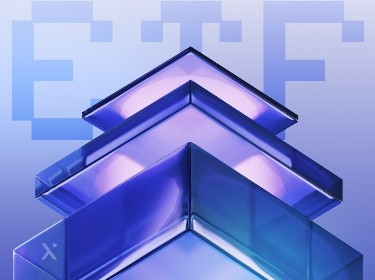The success of NFTs and the growing popularity of the metaverse concept have opened up a new conversation — the metaverse NFT marketplace.
Bridging the gap between virtual and physical worlds, the metaverse NFT marketplace offers some interesting opportunities for companies to capitalize on this new direction.
According to Gartner, by 2026 30% of companies will offer their services in the metaverse. The consulting firm also predicts that by this time 25% of people will spend an hour a day in the metaverse.
Read on to find out what the metaverse NFT marketplace is, what types exist, and how to develop your own solution.
What is a metaverse NFT marketplace?
The metaverse NFT marketplace is a blockchain-based solution that allows users to instantly tokenize their one-of-a-kind digital assets and seamlessly trade them in the metaverse space, while also providing a decentralized experience. It works in a similar fashion to the established NFT marketplaces you’re likely to be familiar with, only it’s in the virtual space of the metaverse. On the metaverse NFT marketplaces, users can trade digital lands, avatars, in-game items and other digital assets.
By integrating their NFT marketplaces into the metaverse projects, companies can extend their service offering and attract new customers who are currently exploring metaverse opportunities. The metaverse NFT website can serve all types of users, from those who are new to the market all the way through to experienced traders who are searching for decentralization and better security.
What are the features of the metaverse NFT marketplace development?
The distinctive features of the metaverse NFT marketplace development include but are not limited to:
- Decentralization, meaning that there is no need for any intermediaries in the trading process
- Interoperability, or the ability to provide users with a unified experience while they explore different independent marketplaces
- Immersive environment, allowing users to socialize and trade in a 3D realistic environment
- Compatibility with NFT wallets, enabling users to buy, sell, and store digital assets
- Tokenization platform development services, which allow users to easily tokenize their assets to gain unique ownership and sell them on the metaverse NFT marketplace
What are the benefits of metaverse and NFT marketplace development?
By combining metaverse and NFT, you have an opportunity to expand your business and attract more users to your platform. With the metaverse NFT marketplace you will be able to not only reach out to more audiences but also boost your sales. Other benefits include:
- Security, as all transactions made in the metaverse NFT marketplace will be secured by blockchain
- Transparency, meaning that users can view any transaction that happens through your marketplace
- Growth opportunities thanks to the fast-evolving metaverse market and the craze surrounding NFTs
- Seamless trading experience for end clients
- No intermediaries and quick transfer of assets
- Quick and hassle-free payments as they are made with cryptocurrency and don’t require credit card details
What types of metaverse NFT marketplaces are out there?
![]()
Currently, there are four main types of metaverse NFT marketplaces: metaverse real estate NFT marketplace, metaverse eCommerce NFT marketplace, metaverse gaming marketplace, and metaverse NFT art marketplace. Let’s take a closer look at each one.
Metaverse real-estate marketplace
Metaverse real-estate marketplaces are designed for users to buy and sell virtual property in the metaverse. To gain ownership of a specific digital property, users need to bid for it and then pay.
Some real-estate companies also showcase physical properties by creating their NFT-powered digital versions. This way, avatars of potential buyers can visit the property and inspect it thoroughly before buying. When the contract is executed in the metaverse, buyers duly get ownership of the physical property in the real world.
Example
Decentraland is probably the best-known example of the metaverse real-estate NFT marketplace. In it, metaverse members can buy, sell, or rent digital properties, as well as conduct NFT auctions. Users can create their digital avatars and explore digital apartments and buildings.
Decentraland also allows businesses to display their architectural projects (including the prototypes of real-world properties), hold exhibitions, and organize concerts.
Find out some useful insights about the opportunities of bringing real estate to the metaverse
Metaverse game marketplace
Metaverse game marketplaces owe their popularity to the new play-to-earn concept that is currently such a big craze among gamers. It allows players to earn in-game assets in the form of NFTs while playing. Moreover, play-to-earn games allow players to withdraw their NFT items to their wallets.
Metaverse game marketplaces are designed for users to trade their gaming characters, accessories, and in-game assets.
Example
Axie Infinity is a popular example of a gaming metaverse that includes play-to-earn opportunities. The metaverse game is built around collectible digital pets, Axies, that come in the form of NFTs. The Axie Infinity ecosystem incorporates the marketplace where users trade their Axies and other game items.
Metaverse eCommerce NFT marketplace
The metaverse eCommerce NFT marketplace allows users to visit shops and check different products with the help of their VR devices. Users can also leverage their avatars to try on the various outfits, cosmetics or accessories they wish to buy. As a result, metaverse eCommerce marketplaces can offer realistic buying experiences similar to the experience of the real world.
Example
The eCommerce giant Amazon has already started incorporating the metaverse technology by implementing Amazon’s Showroom — a virtual design tool that allows shoppers to select, place, and preview furniture. As a result, shoppers can see how the furniture will look in their home before buying it.
Metaverse NFT art marketplace
The NFT art marketplace is a billion-dollar industry. For example, the trading volume of OpenSea, one of the largest NFT marketplaces, was estimated to be worth $3.2 billion in the second quarter of 2022.
Leveraging the metaverse, NFT art marketplaces can provide even more interactive and appealing experiences for users to explore a range of artworks. For example, users’ avatars can attend virtual galleries of popular NFT artists, explore their works, and participate in live NFT art auctions.
Example
MetaMundo has recently launched a 3D NFT marketplace for the metaverse. The marketplace is primarily focused on digital art. It allows users to collect and own metaverse scenes and assets as non-fungible tokens while 3D artists, creators and designers can use it to sell their 3D scenes and assets.
The MetaMundo marketplace is also compatible with many of the existing metaverse-based platforms including Decentraland and The Sandbox.
Check out the video below, where our business analyst discusses the most prominent use cases of the metaverse. You can also find some explanatory videos on the metaverse and NFTs in the video section of our blog.
A step-by-step guide to the metaverse NFT marketplace development
You’ll need to follow 7 steps to build the metaverse NFT marketplace. Let’s take a deep dive into each step to get a better understanding of the development process.
![]()
Step 1. Select a blockchain platform
You’ll need to choose the blockchain network that will be the basis of your metaverse NFT marketplace. Most current metaverse-like projects are built on the Ethereum blockchain. Ethereum’s key rivals are third-generation blockchain ecosystems — Cardano and Polkadot.
There are plenty of factors that may influence your choice, including the consensus mechanism that the platform applies, transaction speed, and transaction cost.
Check out the full list of leading blockchains suitable for NFT marketplace development along with the key aspects to consider
Step 2. Identify main features
Select and prioritize the main features that will become the basis for your NFT marketplace in the metaverse. Some of the features that are commonly demanded by users include simple tokenization, secure peer-to-peer transactions, interoperability, 3D display, auction/sales functionality, and NFT wallet integration.
Step 3. Create a secure database
A further step in the development of the metaverse and NFT is the implementation of an immutable and secure database that will be responsible for holding the sensitive and private data of the user and admin profiles.
You will also need the IPFS (Interplanetary File System) to store NFTs with their unique metadata.
Step 4. Create smart contracts
Due to its decentralized nature, blockchain requires no intermediaries to control the platform. Instead, it applies smart contracts to regulate and execute the operations. Smart contracts are programs that are stored on the blockchain and run when predetermined conditions are met.
Smart contracts will help ensure transparency, traceability, and the irreversibility of transactions that take place on your metaverse NFT marketplace.
The functionality of smart contracts will depend on the requirements and technical aspects of your metaverse project and should be aligned with the features that your project intends to include.
Step 5. Design UI/UX
Involve UI/UX design experts to create an engaging yet easy-to-use interface for your metaverse NFT website. To provide users with the best experience, try to focus on simplicity and responsiveness. Your users should feel confident when navigating through the marketplace.
Step 6. Add required integrations
Next, you should map out the required integrations based on the defined functionality. These are likely to include integration with the wallet, payment gateway and dApps to make the marketplace operable.
Step 7. Perform testing and deployment
Testing is the penultimate step, ensuring there are no bugs or glitches in the process or any other defects associated with the marketplace. When testing is done you can proceed with the deployment of your product.
Is it worth investing in metaverse and NFT development?
According to the analysis performed by Bloomberg Intelligence senior industry analysts,
“The global Metaverse revenue opportunity could approach $800 billion in 2024 vs. about $500 billion in 2020.”
So the interest in metaverse projects does not seem to be slowing down. Moreover, thanks to the metaverse NFT marketplace, NFT trading will become more secure and transparent. In the metaverse, users will be able to get a clear picture of the NFT before purchasing it, which will attract more users and NFT enthusiasts.
If we look at the figures, we can likewise see a healthy trajectory. In June 2021, the total value spent on metaverse sales reached $207 million. Meanwhile, McKinsey predicts that metaverse spending will total $5 trillion in 2030.
![]()
Corporate giants including Facebook, Microsoft, Nike and Reebok have already begun investing in the metaverse NFT solutions. So now is clearly the right time to start exploring possible opportunities in this field.
How can PixelPlex assist you with metaverse NFT marketplace development?
Here at PixelPlex we too are exploring the concept of metaverse, helping our clients unlock new business opportunities and diversify their services. With nearly 10 years in blockchain development and strong expertise in metaverse and NFT development behind us, we can help you implement the metaverse NFT marketplace while ensuring secure trade, clockwork validation, and high throughput.
The metaverse concept is still a relatively new niche, which explains why entrepreneurs and investors have a lot of questions they would like to raise. So if you’re wondering where to start, we’ll be glad to help. The scope of our metaverse development services includes:
- Metaverse consulting
- Metaverse NFT marketplace development
- Digital economies and assets development
- Metaverse integration services
- Crypto infrastructure development
- Metaverse applications development
- Metaverse gaming and 2D/3D art design
Feel free to contact our metaverse consultants and developers to discuss more — or fill in the contact form below.




